Island vs Mainland Cuisine: A Dialogue of Sea...
From the salt-sprayed islands to the...
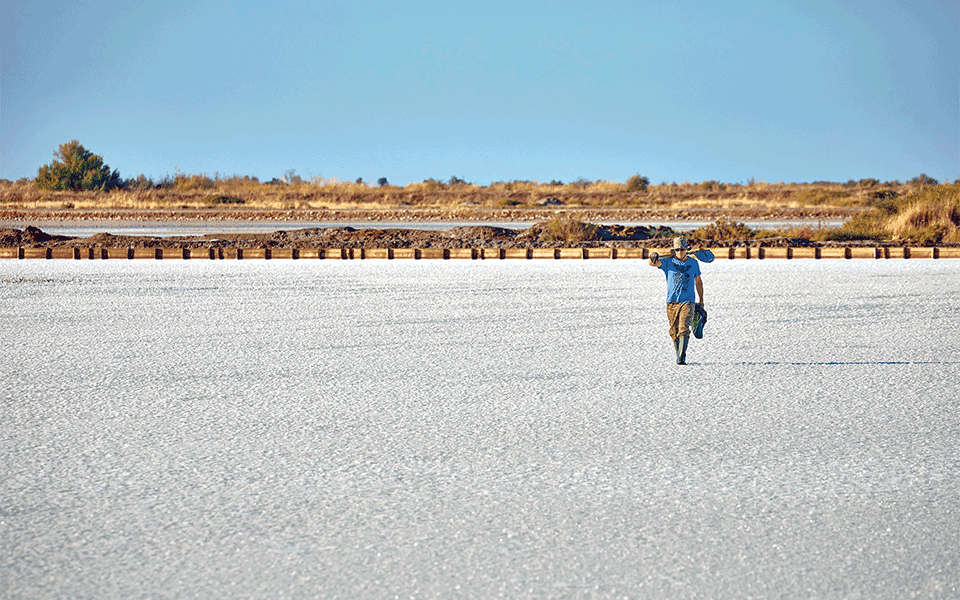
Aside from salt, from the salt flats of Messolongi workers gather fleur de sel.
© George Tsafos
“Are you ecologists?” Two surprised men emerge from behind a big rock, as if from nowhere, wondering how we came to be there. I am not sure if they are herdsmen or laborers.
“We are not,” we reply. We are just passing by, wandering around the Louros area, just outside the town of Messolongi, but it actually feels like the middle of nowhere. The only thing we see is a wild horse and a flock of brown cows grazing. It’s noon, it’s warm and it’s humid.
Returning to the town, we pass by the mud baths of Aghia Triada. There is no reception, nor entrance fee, just a strip of land where people stand covered up with mud from the lagoon. One of them is Christos, a seemingly ageless former football player (actually in his early 70s) who is a big fan of mud therapy. Apart from his eyes, his whole body is black from the mud. He comes here because of some old injuries and praises the mud baths, not only for their therapeutic effects, but also because “they leave your skin soft like cotton,” as he says.
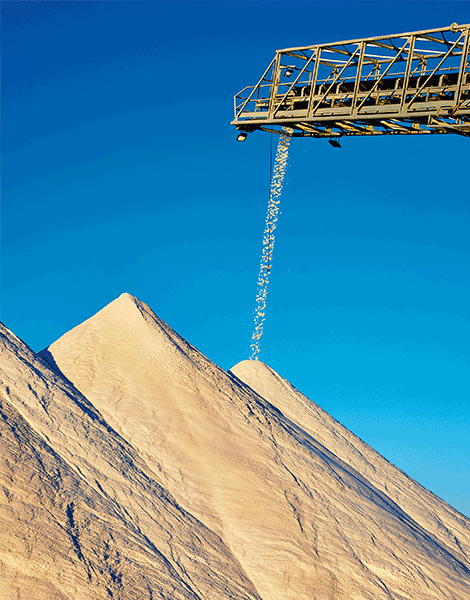
Literal mountains of salt are a characteristic sight at the salt flats of Messolongi.
© George Tsafos
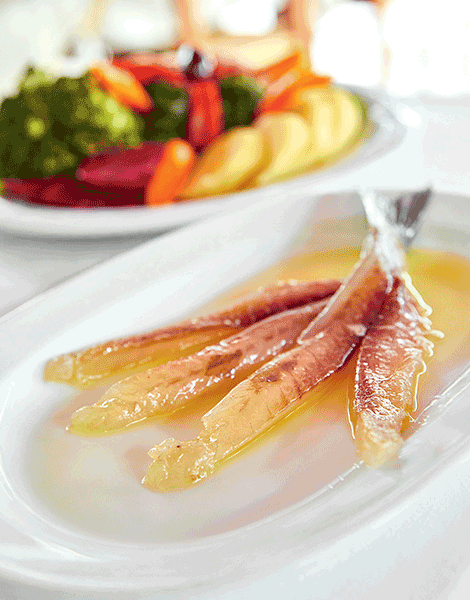
Myxinari, a type of mullet, makes for a delicious meze.
© George Tsafos
In the city center the atmosphere is lethargic. In the early afternoon, Messolongi saves energy. Most of the streets are empty. We pick a traditional taverna for a first acquaintance with the local cuisine, tasting grilled eels, myxinari (a type of mullet), gilt-head bream and steamed oysters which the locals call havara.
We have planned to stay for a few days in this unusual place with its incredible surrounding natural environment – one that has all the potential to become a popular ecotourism destination.
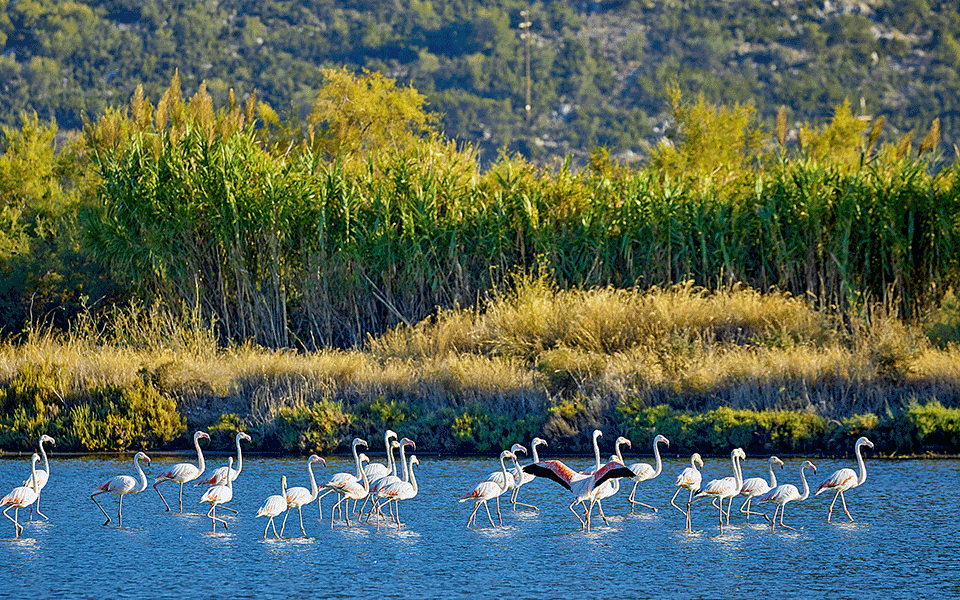
The lagoons of Messolongi attract countless birds, including graceful flamingos.
© George Tsafos
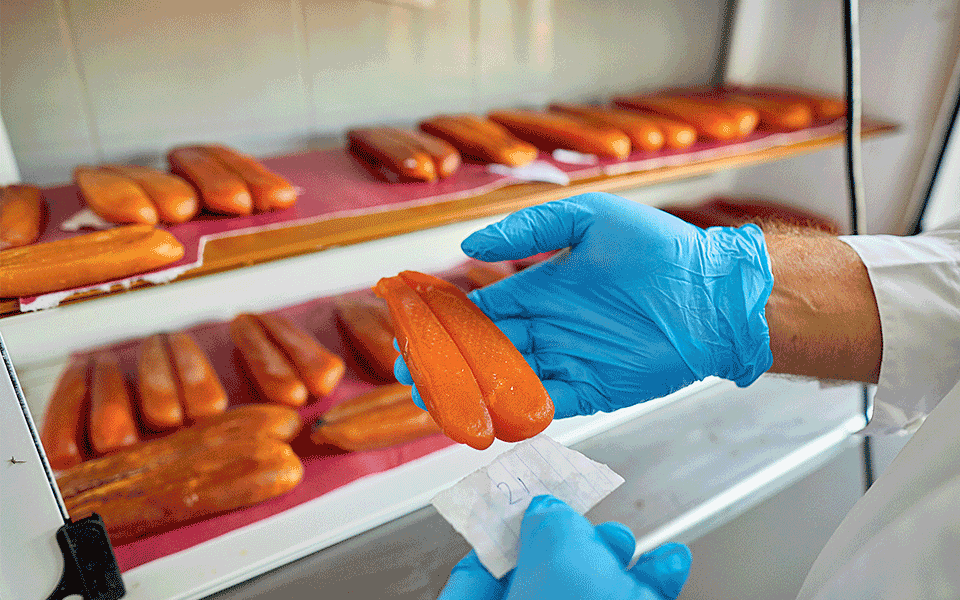
PDO avgotaracho (bottarga) produced by the cooperative "Renaissance".
© George Tsafos
Messolongi is located in western Greece between the Acheloos and Evinos rivers. It is famous for its complex of wetlands which comprise six different interlinked lagoons. It is considered to be the biggest such ecosystem in Greece.
Part of the main lagoon has become a salt flat. Actually, there is a family of words about the lagoons that only the locals use: the traditional fish-farms are called ivaria, the boats without keels priaria, the water-houses pelades, the female mullets that carry the bottarga eggs bafes. The locals are highly invested in the lagoon in ways that sometimes contradict one another: the fishermen see it as their natural base, the hunters as a recreational park, the landscape photographers and birdwatchers as a bird habitat.
Nikos Noulas is a member of the Hellenic Ornithological Society and in charge of birdwatching activities at the Tourism Development Agency of Commerce and Industry Association of Messolongi. We find him at the observatory of East Klisova, monitoring the lagoon with a pair of binoculars.
“In the greater Messolongi area around 297 different bird species have been recorded. Some of them are really rare like the spur-winged lapwing or the great spotted cuckoo,” he says, while trying to figure out which birds are hiding in the nearby bushes just from their squawks and rumbles. If you come to Messolongi, you should definitely visit East Klisova’s observatory. The only thing you need is a pair of field glasses and nature will reveal itself to you.
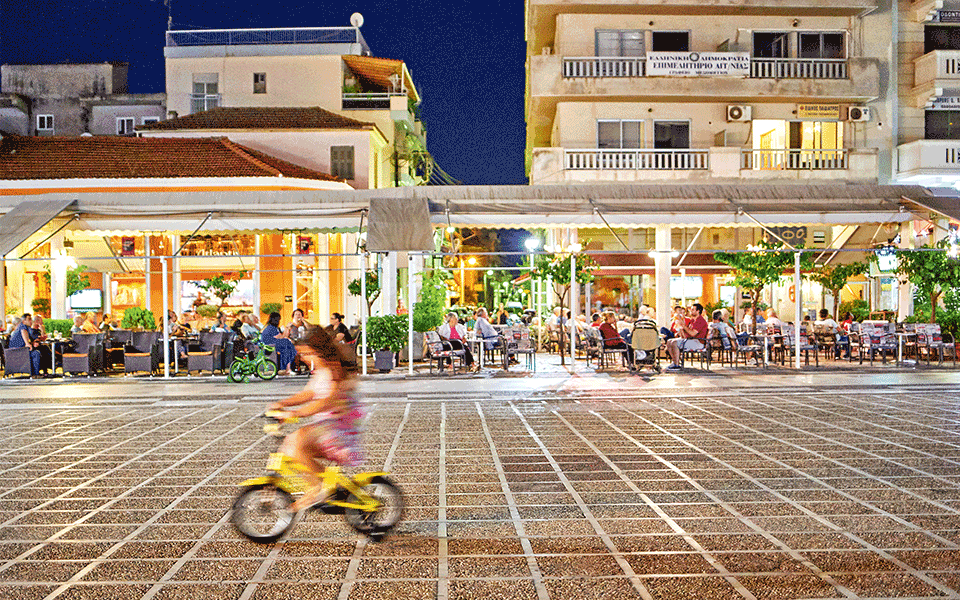
Markou Botsari Square in the heart of the town of Messolongi.
© George Tsafos
And from birds we move on to fish. More specifically, to the grey flathead mullet, from which avgotaracho (also known as bottarga or “Greek caviar”) is produced. There are several avgotaracho producers in Messolongi but the “Renaissance” Fishermen’s Association is the only one that produces avgotaracho that meets PDO standards. These state, among other things, that the fish must originate from the Messolongi lagoons and not be imported from other parts of Greece or from abroad.
We pay a visit to the Renaissance workshop to take a closer look at the process. We see how the fishermen carefully cut the mullet’s belly in order to not damage the large egg sacs and then how they clean, salt, and dry them before they dip them in beeswax. It’s strange to be at the production site of such a luxury product, one that is surrounded by a glamorous mythology, almost like Russian caviar.
The scent of melted wax fills the air, while a little girl, who with her wild beauty looks like a female Mowgli, is wandering around the grown-ups. When you see the avgotaracho being produced in a place such as this, and not on display in a fancy delicatessen in New York, Paris or London, it becomes one of nature’s products once again. Nothing more and nothing less than a natural foodstuff that comes from a fish’s belly.
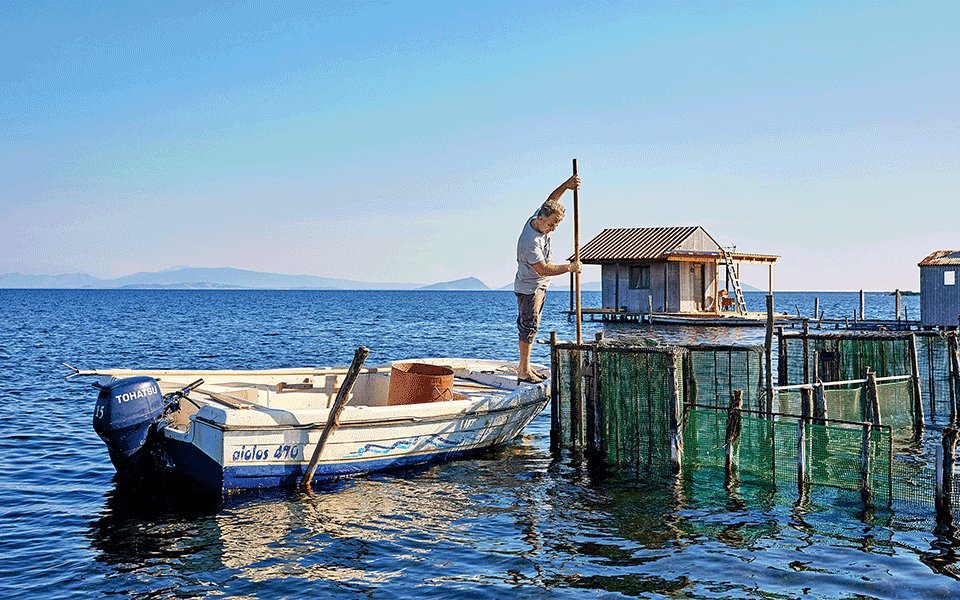
Knowledge and patience define the work of the fishermen in the lagoons of Messolongi.
© George Tsafos
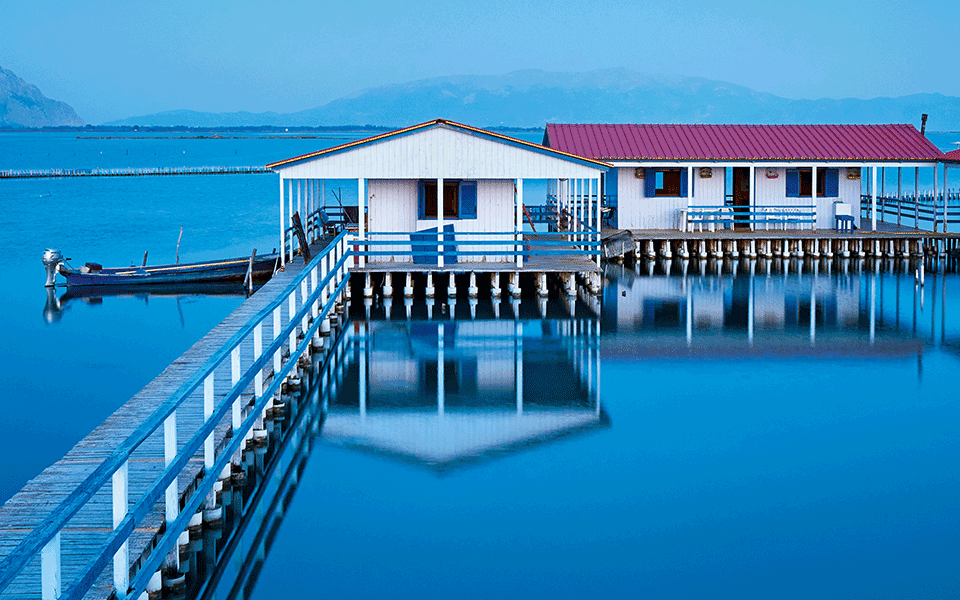
A traditional "pelada" in the lagoons of Messolongi.
© George Tsafos
In any case, the fish farmers prefer to accompany avgotaracho with whisky. Not with tsipouro nor with ouzo. At least, that’s what they say to us while we are having a discussion in a pelada (lagoon-house). Around us there are two loud dogs that won’t stop barking. The life here, in the lagoon’s fish farms, seems quite difficult. There are no standard work shifts because the schedule is not determined by men but by the tide. Also, the members of the fishermen’s associations have to stay together for long periods of time, away from their families. The lagoon houses don’t even have fresh water; the fishermen bring it with containers.
Equally hard is the work of the salt flat laborers, who have to collect the salt as well as the high-quality fleur de sel regardless of the weather conditions. Nevertheless, the salt workers have an advantage: everyday they can admire the beautiful, vast, white salt pans that make you feel like you are in Alaska. Messolongi’s salt flats are not only a production site, but also a well-developed ecosystem, where lots of birds find shelter.
And if one wants to see the salt flats from above? It is possible. The local air club operates flights (100 euro/60 minutes). “Once we flew with local people from the nearby island of Etoliko. We were telling them ‘this is Etoliko’ and they didn’t believe us. They thought we were lying,” says the president of the air club, Vassilis Prevezanos, noting how different a destination looks when you see it from above.
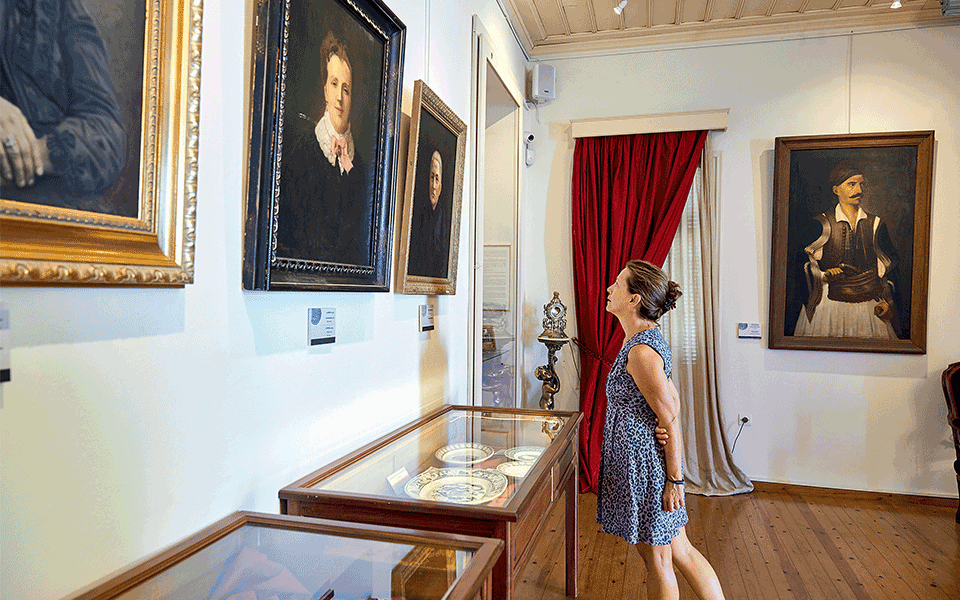
The museum "Diexodos" in Messolongi.
© George Tsafos
As our trip was coming to an end, it was time to pay our dues to the town’s heroic past. About 200 years ago, during the Greek War of Independence, Messolongi became famous for its months-long resistance against the Ottomans. But the most notable incident that has truly marked Messolongi’s identity is the “Exodus”, which occurred on April 10, 1826.
After a year under siege, and knowing that they could not defeat the allied Ottoman and Egyptian armies, the people of Messolongi decided to try to escape. Around ten thousand people fled the town, civilians and soldiers, but few survived; many were brutally slaughtered. This heroic action rekindled philhellenic sentiment outside Greece and earned Messolongi the honorary title of Hiera Polis (the Sacred City).
Inside the town lies the Heroes Garden where the people of Messolongi buried their dead during the siege. It is a serene place filled with palm, pine and eucalyptus trees, interspersed with monuments that pay respect to Messolongi’s defenders and supporters. The most renowned of these is Lord Byron, the British poet who joined the Greek War of Independence and died from fever in Messolongi in 1824, two years before the now famous escape.
Two other sites that feature the town’s great and troubled past are the local art gallery and the Diexodos Museum (both have free entrance).
PREPARING YOUR TRIP
If you want to visit the salt flats or the fish farms, fly with a small plane above Messolongi, or enjoy birdwatching in the lagoon, you can contact the tourist agency “Discover Messolongi”.
Check out visitmes.gr/en, an informative platform with useful travel tips.
Before taking a dip in Messolongi’s mud baths, discuss it with your doctor, because they are not suitable for some people (e.g. pregnant women after the sixth month, individuals with heart conditions etc.).
If you want to contact the “Renaissance” Fishermen’s Association to purchase PDO avgotaracho visit: en-kleisova.blogspot.com.
The Messolongi lagoon belongs to the NATURA 2000 network. For any environmental query click here.
HOW TO GET THERE
Messolongi is 243 km away from Athens. Driving there will take you less than three hours. The cost for gas and tolls is about 55 euros (one way).
ACCOMMODATION
In Messolongi the hospitality industry is not particularly well-developed. There are only a few hotels and most of them are rather old fashioned. However, Airbnb lovers will find many rooms-to-let.
Socrates Organic Village – Wild Olive (Agrilia, tel. 26310-23732). Located in a farm 5 km away from the center of Messolongi, this guesthouse is particularly suited to families and ecotourists. From 68 euros/double.
Hotel Theoxenia (Tourlidos 2, tel. 26310-22493). Offers a variety of rooms, from singles to suites. If you need, you can ask for an additional child’s bed. From 40 euros/double.
Hotel Liberty (Iroon Polytechneiou 41, tel. 26310-28050). Suitable for business travelers. Pets are also allowed. If you want to rent a bike, ask the reception. From 25 euros/double.
FOOD
“Dimitroukas” (tel. 26310-23237) serves roasted and fried eels, while “Ola Hyma” (tel. 26310-55977) is famous for its seafood and salads. Worth a try are “Alatiera” (tel. 26310-22943) and “Avgo tou Kokora” (tel. 26310-24377). Two locally-produced high-quality distilled beverages that we tried in Messolongi are the tsipouro and ouzo (with mastiha) of the Pelada brand.
From the salt-sprayed islands to the...
City or mountain? Urban strolls or...
A steep and curvy drive high...
Vargiani on Mount Parnassos offers stunning...